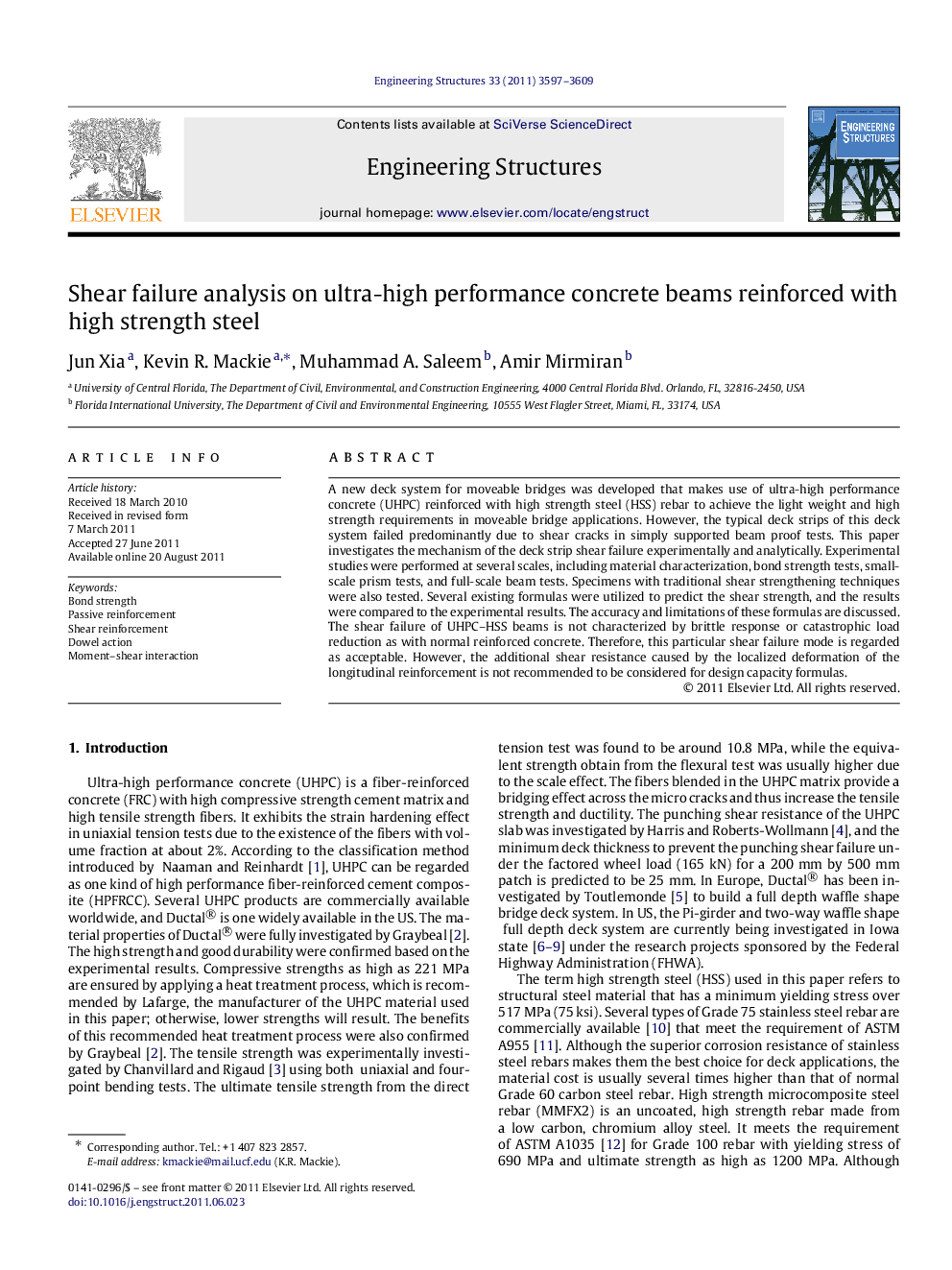| Article ID | Journal | Published Year | Pages | File Type |
|---|---|---|---|---|
| 268063 | Engineering Structures | 2011 | 13 Pages |
A new deck system for moveable bridges was developed that makes use of ultra-high performance concrete (UHPC) reinforced with high strength steel (HSS) rebar to achieve the light weight and high strength requirements in moveable bridge applications. However, the typical deck strips of this deck system failed predominantly due to shear cracks in simply supported beam proof tests. This paper investigates the mechanism of the deck strip shear failure experimentally and analytically. Experimental studies were performed at several scales, including material characterization, bond strength tests, small-scale prism tests, and full-scale beam tests. Specimens with traditional shear strengthening techniques were also tested. Several existing formulas were utilized to predict the shear strength, and the results were compared to the experimental results. The accuracy and limitations of these formulas are discussed. The shear failure of UHPC–HSS beams is not characterized by brittle response or catastrophic load reduction as with normal reinforced concrete. Therefore, this particular shear failure mode is regarded as acceptable. However, the additional shear resistance caused by the localized deformation of the longitudinal reinforcement is not recommended to be considered for design capacity formulas.
► Good bond between ultra-high performance concrete and high strength steel was observed. ► Primary beam failure mechanism is a non-abrupt shear failure. ► Shear failure was accompanied by large deformation and rotation of the beam. ► Design shear capacity was estimated by moment–shear interaction at the cracked section. ► Reinforcement end anchorage enabled additional post-crack load capacity and ductility.
